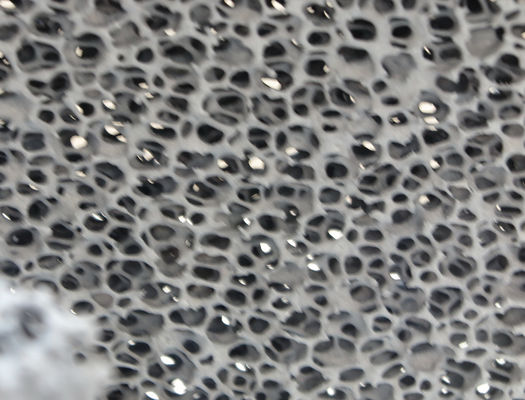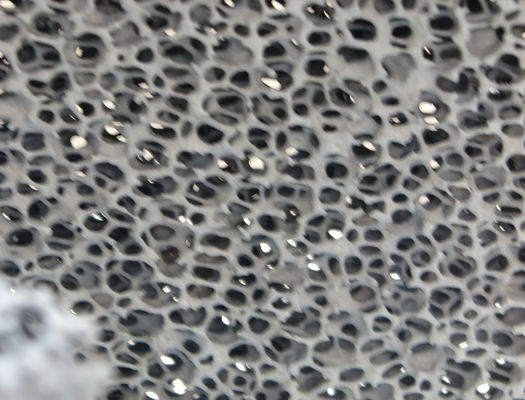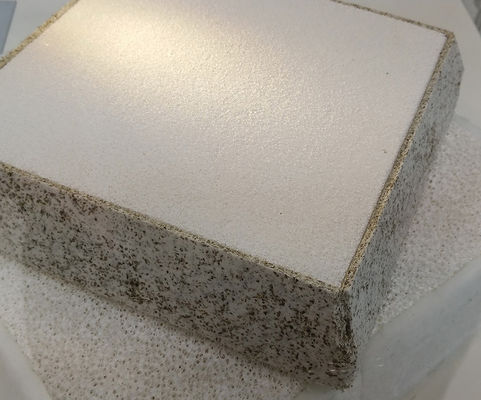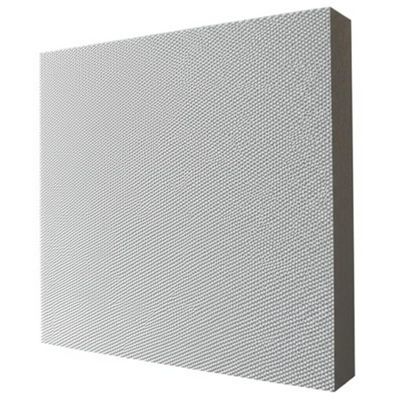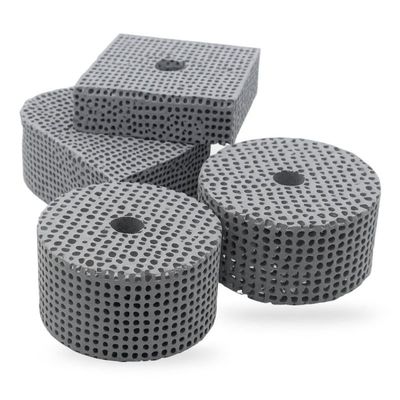Filtro de espuma cerâmica
Uma caixa de filtragem de alumínio fundido é uma câmara revestida de refratário integrada no caminho de fluxo do metal fundido (normalmente entre o forno e a unidade de fundição).Filtro de espuma cerâmica (CFF), uma placa de cerâmica porosa concebida para capturar fisicamente inclusões não metálicas (impurezas) à medida que o alumínio fundido é derramado através dela.
Este sistema é uma peça crítica e padrão de tecnologia em fundições e fundições de alumínio modernas para a produção de produtos fundidos de alta qualidade, livres de defeitos.
Propósito e por que é necessário
O alumínio fundido contém sempre impurezas sólidas chamadasInclusõesEstes incluem:
- Óxidos:(Al2O3) resultante da oxidação da superfície durante a fusão e a transferência.
- Espinel:Óxidos complexos que contêm frequentemente magnésio.
- Carbidos:De revestimentos ou ferramentas.
- Partículas refratárias:Erosão dos revestimentos dos fornos e das caldeiras.
- Aglomerados:Aglomerados destas partículas.
Se não forem removidas, estas inclusões levam a:
- Um acabamento de superfície ruim.
- Propriedades mecânicas reduzidas (resistência, ductilidade).
- Porosidade e defeitos nos produtos finais.
- Falhas catastróficas em aplicações de alta integridade, como partes aeroespaciais ou automotivas.
A caixa CFF é o método mais eficiente e amplamente utilizado para remover estas inclusões.
Principais componentes do sistema de filtragem
Um sistema típico consiste em três partes principais:
1. A caixa de filtragem (ou caixa de filtragem):
- Uma caixa de aço robusta fortemente revestida com cimento refratário ou painéis refratários pré-fundidos.
- Projetado para conter alumínio fundido e resistir a choques térmicos e corrosão química.
- Tem um poço de entrada (onde o metal entra) e um poço de saída (onde o metal filtrado sai).
- Muitas vezes inclui um sistema de aquecimento (gás ou elétrico) para evitar o congelamento do metal.
2. O filtro de espuma cerâmica (CFF):
O coração do sistema é uma estrutura tridimensional de espuma de célula aberta feita de materiais como:
- Alumínio (Al2O3)
- Circónio (ZrO2)
- Carbono de silício (SiC)
É caracterizada pela suaPoros por polegada (PPI):
- 10-20 PPI:Filtração grosseira para aplicações de esmagamento.
- 30 a 50 PPI:A gama mais comum para fundição geral (por exemplo, bilhetes de extrusão, lingotes de fundição).
- 50 a 80 PPI:Filtração fina para produtos de alta qualidade como folhas aeroespaciais, folhas e fundidos críticos.
Os filtros são frágeis e devem ser manuseados com cuidado antes de serem utilizados.
3. O sistema de vedação e junta de filtros:
- Uma junta de papel cerâmico de alta temperatura é colocada entre o filtro e a borda da caixa.
- Afeixe de retençãoou pinça refratária é usada para pressionar o filtro para baixo sobre esta junta, criando uma vedação que forçatodoso metal fundido para fluir através do filtro, não em torno dele.
Como funciona: O processo de filtragem
O processo é principalmenteFiltração de leito profundo, envolvendo dois mecanismos principais:
1- Tesoura mecânica:
Grandes inclusões e aglomerados são fisicamente bloqueados na superfície do filtro porque são maiores do que as aberturas dos poros do filtro.
2Filtração de profundidade:
À medida que um bolo de inclusões se acumula na superfície, ele próprio se torna uma camada de filtro.
Inclusões menores estão presasdentroa complexa rede tridimensional das células do filtro através de mecanismos de:
- Intercepção:As partículas tocam e aderem às paredes do filtro.
- Difusão Browniana:Partículas muito finas deslizam e colidem com as paredes celulares.
- Sedimentação gravitacional:As partículas depositam-se nas paredes celulares.
- Impacto inercial:As partículas não podem seguir o caminho tortuoso do fluxo e impactar o material cerâmico.
Esta combinação proporciona uma eficiência de filtragem extremamente elevada, frequentemente > 95%.

 Por favor verifique seu email!
Por favor verifique seu email! Por favor verifique seu email!
Por favor verifique seu email!  Por favor verifique seu email!
Por favor verifique seu email! Por favor verifique seu email!
Por favor verifique seu email! 


